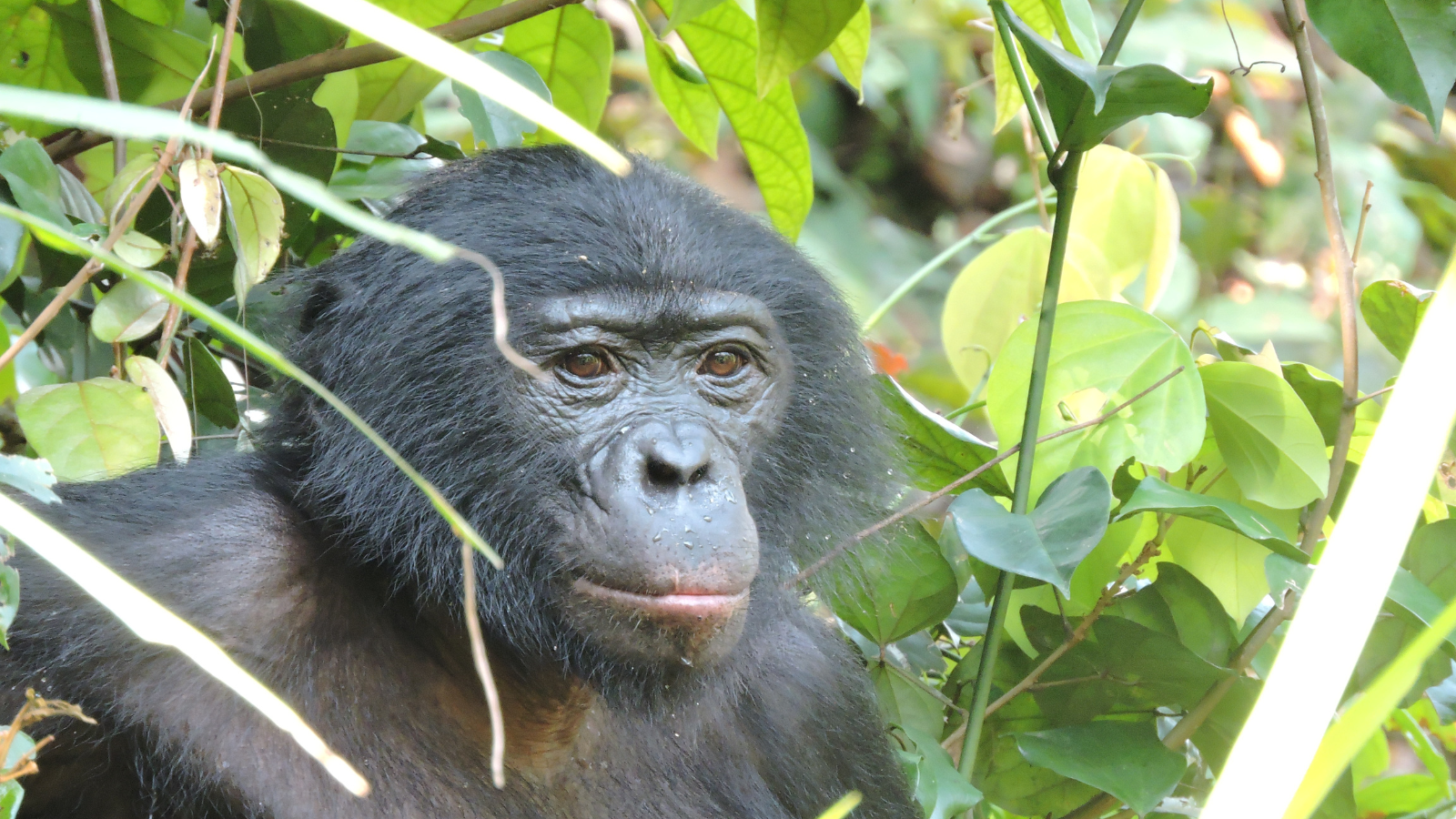'A forest with bonobos has never been so quiet': Most extreme case of violence in 'hippie' species recorded, with females ganging up on male in unprecedented attack
Female bonobos routinely form coalitions to stamp out threats from males, but the level of violence in this attack was unprecedented.

Five wild female bonobos in the Democratic Republic of the Congo brutally attacked one of their male group mates, disfiguring his face almost beyond recognition, ripping off one of his ears, and biting his testicles in an unprecedented act of violence for the species, scientists report.
Researchers arrived a few minutes late to the scene, so they aren't entirely sure what sparked the ferocious act, which lasted around 30 minutes. However, they suspect the male bonobo may have tried to harm one of their infants, the authors reported Oct. 6 in the journal Current Biology.
"We didn't see the onset of the attack, but it's hard to explain in other ways, like what's the function of this remarkably extreme violence," study lead author Sonya Pashchevskaya, a doctoral researcher at the Max Planck Institute of Animal Behavior in Germany, told Live Science.
There has been only one other documented case of such an attack, in a different bonobo population around 186 miles (300 kilometers) away, and that appeared to be punishment for attempted infanticide, she explained.
This recent assault, which happened Feb. 18 in the LuiKotale bonobo community in Salonga National Park, is the most extreme case of violence in a wild bonobo population to date and challenges the stereotype of bonobos being the nonviolent "hippies" of the primate world.
Bonobos (Pan paniscus), along with chimpanzees (Pan troglodytes), are our closest living relatives. But unlike chimpanzees, bonobos have a reputation for "making love, not war," with individuals frequently using sex to relieve tensions.
However, male-male aggression is still common, and female bonobos are known to team up to fight males who threaten them or their young. This female "coalitionary" behavior seems to underpin the female dominance hierarchy in the species and could explain the "lack of lethal aggression or infanticide" in bonobo societies, the authors noted in the study.
Get the world’s most fascinating discoveries delivered straight to your inbox.
There was nothing untoward on the morning of the attack. "It was a usual data collection day," Pashchevskaya noted. The team, which included local field assistants and research assistants, were following small subgroups of bonobos from the roughly 60-strong LuiKotale community through the forest.
Suddenly, bonobo screams erupted from roughly 0.3 miles (0.5 km) away. Pashchevskaya assumed the high-pitched screeches were excitement from catching small antelope prey.
"The bonobos who I was with at that time, they all just drop from the trees and start sprinting down there," she said. She followed in hot pursuit and arrived at the scene just a few minutes after it all started.
"First thing that immediately happens is, I smell blood," Pashchevskaya recalled. When the team spotted a group of five females stomping on, beating and biting a male lying head down on the ground, she realized this was not about an antelope hunt.
The male victim, a 19-year-old called Hugo, lost most of his hair in the assault, as well multiple toes, part of his ear, and the flesh on his knuckles. The assailants then licked his blood off their fingers.

No group member tried to intervene, despite the entire community being present. "Everybody is very silent. It's like a forest with bonobos has never been so quiet," Pashchevskaya said. "This is nothing I've ever seen before."
Two days before, Pashchevskaya noticed Hugo trying to grab one of the attacker's infants, which the team speculated may have sparked the attack as an act of retaliation.
"Of course, this is just one observation two days before, but if this kept happening, it could have potentially triggered an attack," she said. "Other females would join this potentially, because this is then someone they can also recruit [in the future]."
Hugo eventually managed to walk away, but has since been missing, leading the team to suspect he died from his injuries. "There's no way he survived," Pashchevskaya said.
Nahoko Tokuyama, a primatologist who researches bonobos at Chuo University in Japan but was not involved in the recent work documenting the attack, said that although she wasn't surprised by the group assault, she did not expect such grave injuries.
"I had previously believed that wild female bonobos, while sometimes becoming violent, would not injure an opponent to such a severe extent," Tokuyama told Live Science in an email.
However, she cautioned that Hugo may still be alive. "Bonobos have a fission-fusion society, and it is possible for a male to spend long periods alone," she said. "In our long-term studies, we have had cases where males who had not been seen for several months returned to the group, so the question of whether Hugo died needs to be considered more carefully."

Sophie is a U.K.-based staff writer at Live Science. She covers a wide range of topics, having previously reported on research spanning from bonobo communication to the first water in the universe. Her work has also appeared in outlets including New Scientist, The Observer and BBC Wildlife, and she was shortlisted for the Association of British Science Writers' 2025 "Newcomer of the Year" award for her freelance work at New Scientist. Before becoming a science journalist, she completed a doctorate in evolutionary anthropology from the University of Oxford, where she spent four years looking at why some chimps are better at using tools than others.
You must confirm your public display name before commenting
Please logout and then login again, you will then be prompted to enter your display name.
